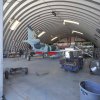- Joined
- Sep 29, 2011
- Posts
- 448
- Qantas
- Platinum 1
JB747 - I hope the MNL-HKG ferry went off without any weather related issues. Travelling on Friday nights QF A380 service (QF128) from HKG-SYD the weather appeared to be settling down - much better than what it was on Thursday evening. However I did notice that during the late afternoon HKG was down to 1 runway for take off and landings rather than the normal 2.
Back to the QF128 HKG-SYD service. At top of descent into SYD the FO made the standard PA and also added the Captain Bob Sm*** was celebrating 45 years with Qantas. Whatever the industry 45 years of service is a rarity and a great achievement to the pilot in question.
A couple of questions: In Qantas are there many pilots with 45yrs+ experience? Is there a maximum age for pilots to fly International Operations? Is there a program for pilots who can no longer fly International Operations to transfer to Domestic and/or Charter Flying - or do most pilots, when they retire, simply sign off and walk away quietly?
Thanks in advance.
Back to the QF128 HKG-SYD service. At top of descent into SYD the FO made the standard PA and also added the Captain Bob Sm*** was celebrating 45 years with Qantas. Whatever the industry 45 years of service is a rarity and a great achievement to the pilot in question.
A couple of questions: In Qantas are there many pilots with 45yrs+ experience? Is there a maximum age for pilots to fly International Operations? Is there a program for pilots who can no longer fly International Operations to transfer to Domestic and/or Charter Flying - or do most pilots, when they retire, simply sign off and walk away quietly?
Thanks in advance.















